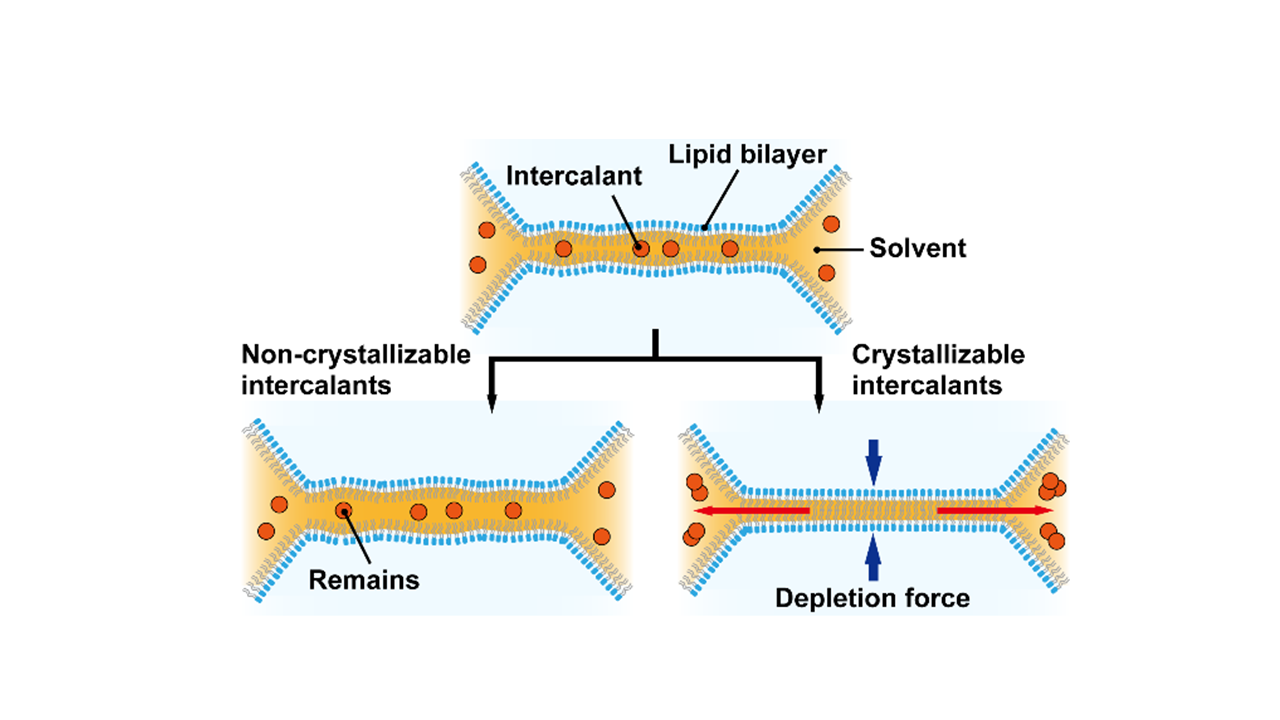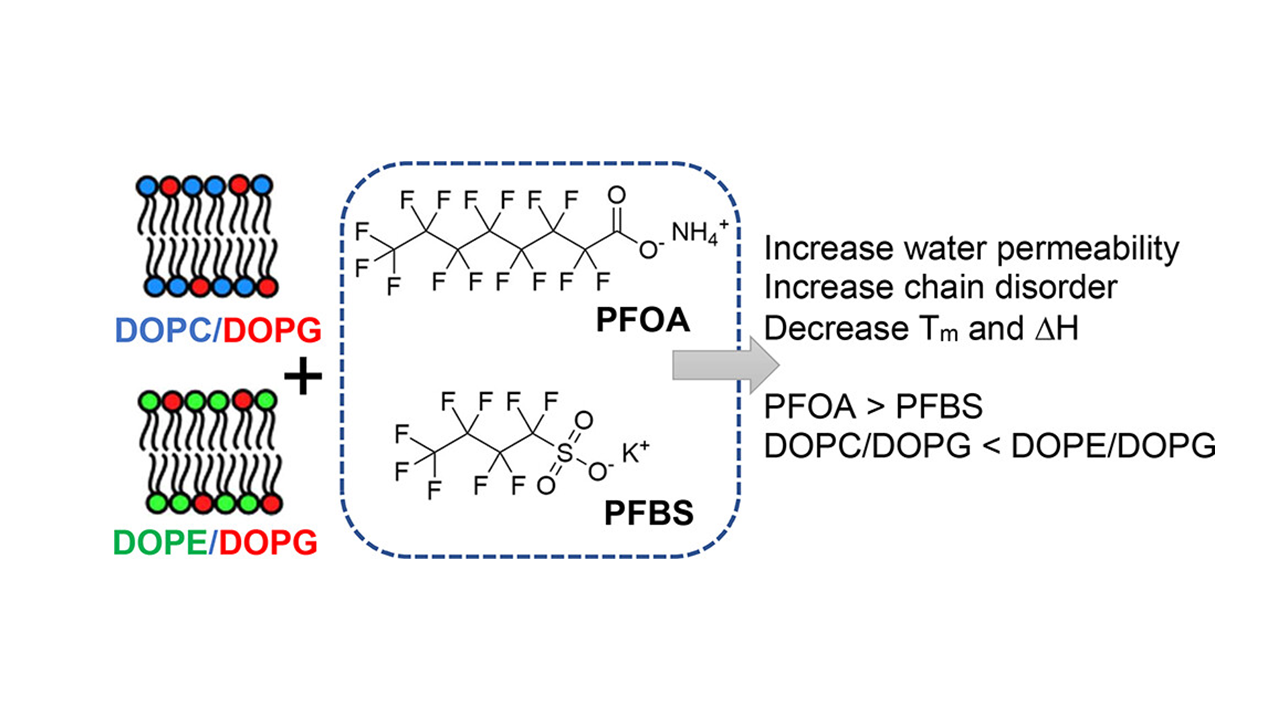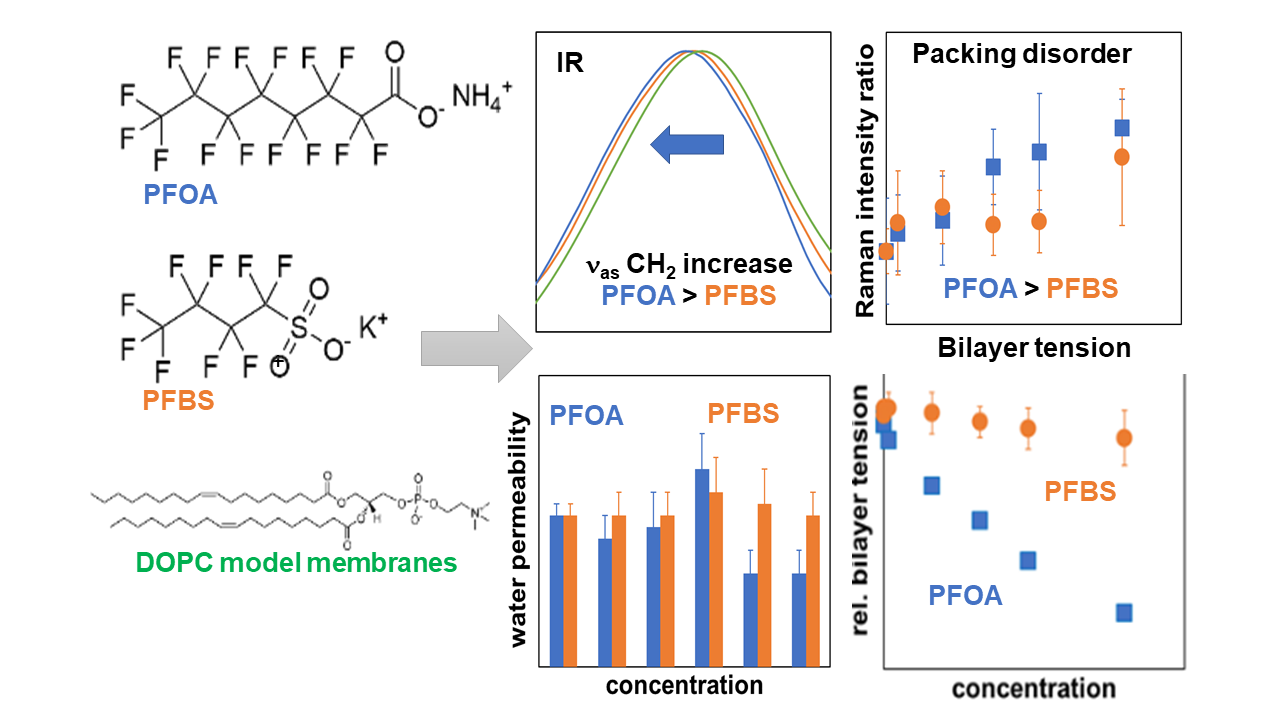Published in Langmuir (ACS Publication): Enthalpic Effects of Chain Length and Unsaturation on Water Permeability Across Droplet Bilayers of Homologous Monoglycerides
Dr. Lee’s recent paper, titled “Enthalpic Effects of Chain Length and Unsaturation on Water Permeability Across Droplet Bilayers of Homologous Monoglycerides” has been published in Langmuir, a publication of the American Chemical Society.
The paper is coauthored by three undergraduates, Maria Lopez (’17 Biochemistry), Sue Ellen Evanglista (’17 Chemistry), and Melissa Morales (’16 Chemistry). In this paper, a deeper understanding of unassisted passive transport of water permeation across lipid membranes was attained by studies using a droplet interface bilayer (DIB) formed by the contact of two aqueous droplets in an immiscible solvent containing bilayer-forming surfactant. We have investigated the effect of acyl chain structure of amphiphilic monoglycerides on the osmotic permeability of water across DIB membranes composed of these monoglycerides, where the acyl chain length (C14 to C24), number of double bonds (1–4), and the position of double bond are varied systematically along the acyl chains. Both permeability values and activation energies have been extracted for water transport across a lipid bilayer formed of a homologous series of lipids, allowing us to make ready comparisons between the different lipids and potentially better elucidate the contributions that molecular motifs make to the permeation process. Congratulations to the research team!





